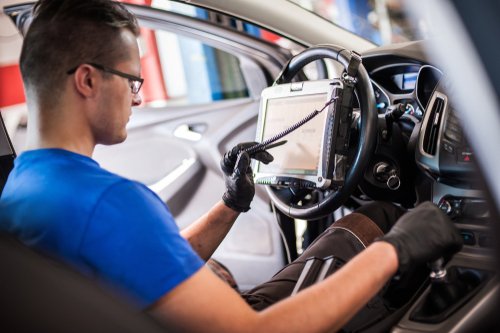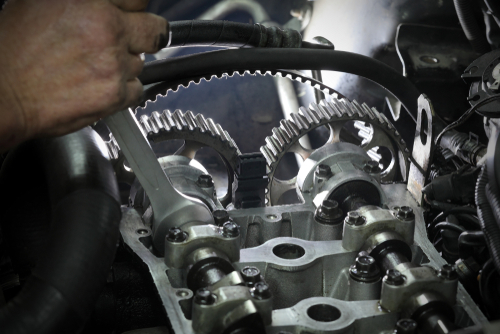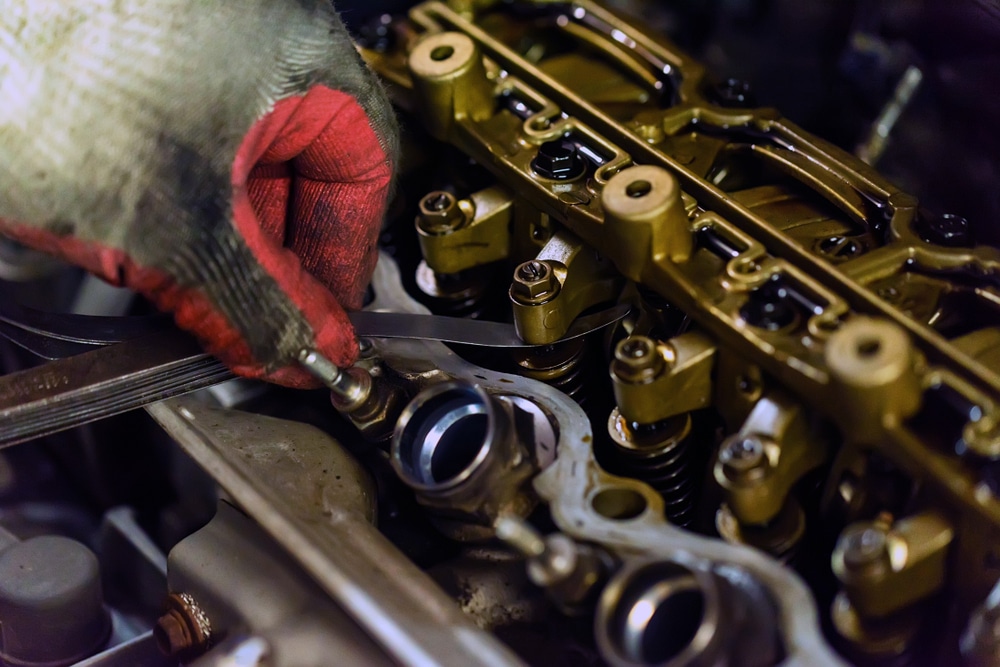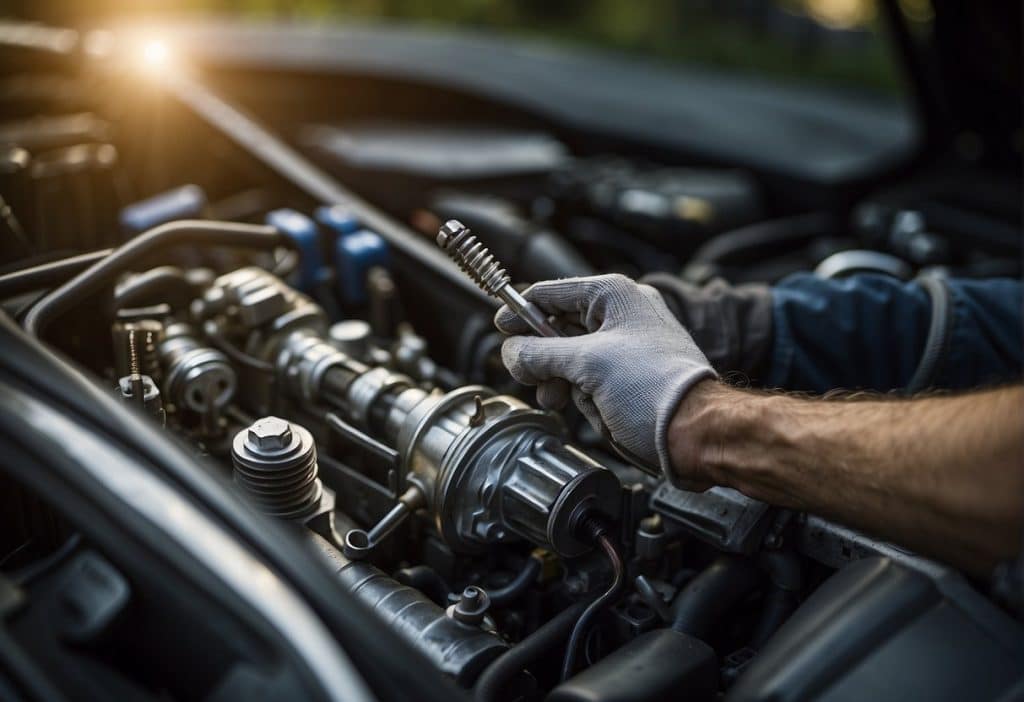Ever wondered why your check engine light is on? It might be due to the P0017 code. This diagnostic trouble code indicates a problem with the crankshaft and camshaft position correlation in your engine’s Bank 1.
Don’t panic – understanding this code can help you pinpoint the issue and potentially save you a trip to the mechanic.

You might be thinking, “Great, another car problem to deal with.” But fear not! This code is often related to simple issues like a worn timing belt or a faulty sensor.
With a bit of knowledge, you can tackle this problem head-on. Plus, addressing it promptly can prevent more serious engine damage down the road.
So, buckle up and get ready to dive into the world of crankshafts and camshafts. By the end of this article, you’ll be equipped with the know-how to diagnose and potentially fix the P0017 code.
Who knows? You might even impress your mechanic with your newfound expertise!
Key Takeaways
- P0017 indicates a timing issue between the crankshaft and camshaft in your engine’s Bank 1.
- Common causes include worn timing belts, faulty sensors, or low oil pressure.
- Prompt diagnosis and repair can prevent more serious engine damage.
Understanding the Basics
P0017 is a pesky little code that can leave you scratching your head. It’s all about timing, folks – the delicate dance between your crankshaft and camshaft.
Let’s break it down into bite-sized chunks that even your grandma could understand.
What Is P0017?
P0017 is a diagnostic trouble code that pops up when your engine’s timing is off. Imagine your car’s engine as a finely tuned orchestra – the crankshaft and camshaft are the conductor and first violin.
When they’re not in sync, you’ve got yourself a P0017.
This code specifically relates to Bank 1 Sensor B, which is typically the exhaust side camshaft on the engine bank containing cylinder #1. When your car’s computer (PCM) detects that these two aren’t playing nice together, it throws this code.
Crankshaft Position Vs. Camshaft Position

Your crankshaft and camshaft are like an old married couple – they need to work together perfectly or things go south fast.
The crankshaft position sensor keeps tabs on the pistons’ movement, while the camshaft position sensor monitors valve operation.
These sensors send signals to your PCM, which uses this info to control fuel injection and ignition timing.
When the PCM notices these signals are out of whack by more than 9 degrees advanced or 12 degrees retarded, it’s P0017 time, baby!
This misalignment can cause poor engine performance, rough idling, and even stalling. It’s like trying to dance the tango with your partner doing the cha-cha – it just doesn’t work.
Bank 1 Sensor B: A Closer Look
Now, let’s zoom in on Bank 1 Sensor B. “Bank 1” refers to the side of the engine that includes cylinder #1. “Sensor B” typically means we’re dealing with the exhaust camshaft sensor.
This sensor is crucial for maintaining proper engine timing. It’s like the timekeeper in our engine orchestra, making sure everything happens at just the right moment.
When Bank 1 Sensor B reports back to the PCM that the exhaust camshaft isn’t where it should be in relation to the crankshaft, that’s when P0017 rears its ugly head.
It could be due to a faulty sensor, wiring issues, or even mechanical problems like a stretched timing chain.
Symptoms of P0017

You might not notice anything’s amiss at first, but P0017 can be a real troublemaker. Let’s dive into the telltale signs that your car’s crankshaft and camshaft aren’t playing nice together.
Recognizing the Tell-Tale Signs
Your engine might start acting like a temperamental toddler. You’ll notice it misfiring, as if it’s trying to cough up a hairball.
The idle could get rougher than your great-aunt’s homemade moonshine.
Power loss? Oh, you bet. It’s like your car suddenly decided to go on a diet without telling you. Acceleration becomes a suggestion rather than a command.
Fuel economy? Let’s just say your wallet won’t be happy. Your car will be guzzling gas like it’s going out of style.
The Check Engine Light Saga
Ah, the Check Engine Light – that little amber tattletale on your dashboard. When P0017 rears its ugly head, this light will shine brighter than a disco ball at a ’70s party.
It’s not just any old illumination, mind you. This Malfunction Indicator Lamp (MIL) is specifically telling you, “Hey buddy, something’s fishy with the crankshaft-camshaft correlation.”
But here’s the kicker: P0017 rarely travels alone. It often brings its cousins P0016, P0018, and P0019 to the party.
So don’t be surprised if your OBD-II scanner lights up like a Christmas tree.
Diagnosing the P0017 Code

When that pesky check engine light pops on with a P0017 code, it’s time to put on your detective hat. This diagnostic trouble code (DTC) is all about timing issues between your crankshaft and camshaft.
Let’s dive into how you can crack this automotive mystery.
Starting the Investigation
First things first, grab your trusty OBD-II scanner. It’s like a crystal ball for your car, revealing the secrets hidden in its electronic brain.
Plug it in and confirm that P0017 is indeed your culprit.
Next, take a peek under the hood. Look for any obvious signs of trouble, like loose wiring or damaged connectors. Sometimes, the simplest problems can trigger this code.
Check your service bulletins too. Manufacturers often release these nuggets of wisdom for common issues.
Your P0017 might be a known gremlin for your make and model.
Tools of the Trade
Time to break out the big guns! You’ll need a multimeter to check those finicky electrical connections. It’s like a lie detector for your car’s wiring.
Don’t forget about your timing light. This handy gadget will help you check if your timing chain or belt is playing nice with the rest of the engine.
A good repair manual is worth its weight in gold. It’ll give you the specific steps for your vehicle, because let’s face it, not all cars are created equal when it comes to diagnosing P0017.
Lastly, patience is your most important tool. Diagnosing this code can be tricky, but with a cool head and these tools, you’ll be a P0017 detective extraordinaire in no time!
Common Culprits and Causes of P0017
When your car starts acting up with a P0017 code, it’s like your engine’s timing is doing the cha-cha instead of the waltz. Let’s dive into the usual suspects that might be throwing off your crankshaft and camshaft’s dance routine.
Timing Issues: Belt Vs. Chain
You’ve got two main dancers in this timing tango: the belt and the chain. A misadjusted or broken timing belt/chain can turn your engine’s smooth rhythm into a clumsy stumble.
Timing belts are like the prima donnas of the engine world. They need regular replacements, or they’ll snap faster than you can say “check engine light.” If you’ve been skipping those timing belt changes, you might be in for a rude awakening.
Chains, on the other hand, are the tough guys. They last longer, but when they go bad, they go bad with a vengeance. A stretched chain can make your engine sound like it’s gargling marbles.
Don’t forget about the timing belt/chain tensioner. This little gizmo keeps everything tight. If it’s slacking off, your timing will be as off as a karaoke singer after too many beers.
Wiring Woes: Tracing Electrical Issues
Ah, wiring – the unsung hero of your car’s electrical system. When it comes to P0017, damaged wiring can be a real party pooper.
You might have a short circuit that’s making your sensors go haywire. It’s like trying to have a phone conversation with bad reception – your car’s computer is getting all the wrong signals.
Check those connectors too. Corroded or loose connections can make your sensors as unreliable as a weather forecast. A quick clean-up or tightening might just save you a trip to the mechanic.
Don’t forget about the camshaft sensor and crankshaft sensor wiring. These guys need to be in perfect sync, like synchronized swimmers.
If their wires are frayed or damaged, it’s like trying to dance the tango with two left feet.
Sensor Stories: When Good Parts Go Bad
Sensors are the tattletales of your engine, and sometimes they just can’t keep their stories straight. A faulty cam or crank sensor can send your engine into a tizzy.
The camshaft position sensor is like the engine’s dance instructor, telling everything when to move. If it’s off its game, you might end up with a P0014 code tagging along with your P0017.
Your crankshaft sensor, on the other hand, is the timekeeper. If it’s not keeping the beat, you could see a P0008 or P0009 joining the error code party.
Don’t forget about that sneaky oil control valve. It’s supposed to keep your variable valve timing in check, but when it goes bad, it’s like trying to conduct an orchestra with a wet noodle.
Fixes and Repairs

Tackling P0017 can be a bit tricky, but don’t worry – we’ve got you covered. Let’s roll up our sleeves and dive into some hands-on fixes, as well as preventative measures to keep your engine purring like a kitten.
Getting Hands-On With Repairs
First things first, grab your trusty OBD-II scanner and double-check that P0017 code.
Now, let’s play detective with your engine. Start by inspecting the wiring and connectors for your crankshaft position sensor (CKP) and camshaft position sensor (CMP).
These little guys can be real troublemakers.
Next up, take a peek at your timing chain or belt. If it’s looking a bit worse for wear, it might be time for a replacement.
Don’t forget to check that reluctor ring too – a damaged one can throw off your engine timing faster than you can say “check engine light.”
If you’re feeling brave, you might want to test the oil control valve. A faulty one can mess with your cam and crank patterns quicker than you can change a spark plug.
Preventative Measures and Maintenance Tips
Now, let’s talk about keeping that P0017 code at bay.
Regular oil changes are your best friend here. Clean oil keeps your engine happy and can prevent a whole host of issues, including timing problems.
Keep an ear out for any unusual engine noises. If your engine starts sounding like a maraca, it might be time to check your timing chain or belt.
Don’t ignore those pesky error codes either. P0335 or P0300 popping up? Get them checked out pronto. They could be early warning signs of bigger problems brewing under the hood.
Lastly, consider giving your CKP and CMP sensors a little TLC now and then.
A quick clean can go a long way in preventing false readings and keeping that P0017 code from ruining your day.
Frequently Asked Questions
Fixing a P0017 code can be tricky, but it’s not impossible. Let’s dive into some common questions about this pesky issue and how to tackle it without losing your cool (or your cash).
What’s the lowdown on fixing code P0017 without breaking the bank?
Start with the basics, folks. Check those wiring connections and connectors first. A loose wire might be the culprit, and that’s a cheap fix.
If that doesn’t do the trick, look at replacing the camshaft or crankshaft sensors.
They’re usually not too pricey, and you might even be able to swap them out yourself.
Could you tell me where to find this elusive Bank 1 Sensor B? It’s like a game of automotive hide-and-seek!
Ah, the old Bank 1 Sensor B treasure hunt! It’s usually on the exhaust side of the engine. But here’s the kicker: its exact location varies by vehicle.
You’ll want to grab your trusty engine diagram for your specific make and model. It’s like a treasure map for your car’s innards!
How much moolah am I going to shell out to clear that pesky P0017 code? Need to prepare my wallet!
Well, it depends on what’s causing the ruckus. If it’s just a loose wire, you might get off scot-free (except for the diagnostic fee).
Replacing sensors? You’re looking at $100-$300. But if it’s something more serious, like timing chain issues, brace yourself. That could set you back $500-$1000 or more.
My trusty Hyundai’s throwing a P0017 at me. Any quick tips for a home garage mechanic?
First things first, grab yourself an OBD2 scanner if you haven’t already. It’s like a stethoscope for your car.
Next, check those timing components. Hyundais can be finicky with their timing chains.
Make sure everything’s lined up properly. And don’t forget to inspect the oil – low oil can cause timing issues too!
Is there a universal headache pill for sorting out a P0017 code on different car brands, or is each one a unique snowflake?
Each car’s a bit of a diva when it comes to P0017. But there are some common threads.
Start with the basics: check sensors, wiring, and timing components.
That said, some brands have their quirks. Chevys and GMCs are known for this issue, often due to stretched timing chains.
Always consult your specific vehicle’s manual for the best approach.
Any tips for diagnosing the P0017 code without playing a guessing game? I’d like to keep my hair, thank you!
Don’t pull your hair out just yet! Start with a visual inspection of your engine.
Look for obvious issues like damaged wires or oil leaks.
Use your OBD2 scanner to check for any additional codes. They might give you more clues.
And if you’re feeling brave, a timing light can help you check if your camshaft and crankshaft are in sync.
